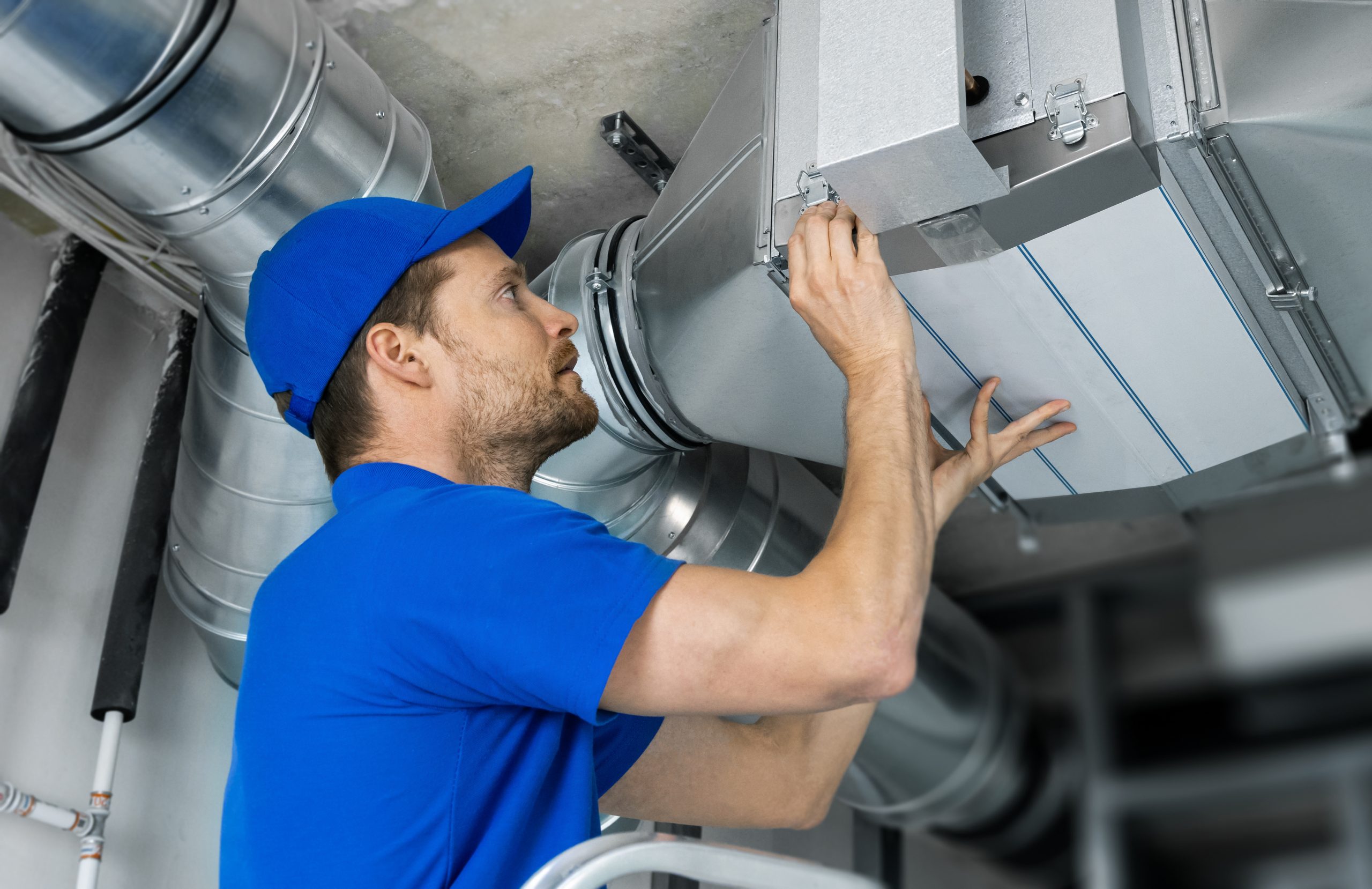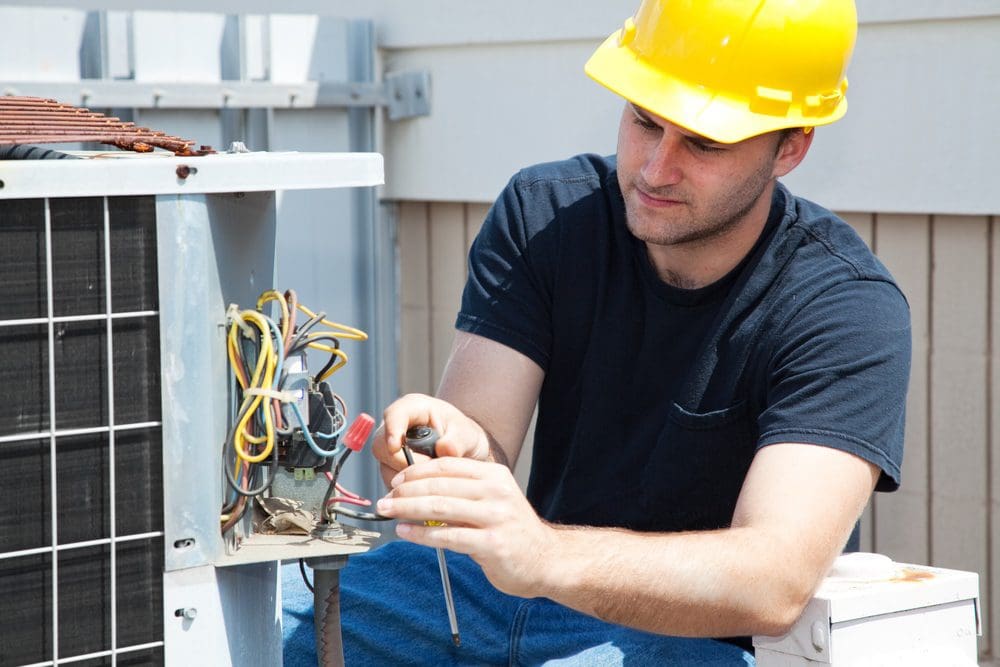Just How a Heatpump and Heating System Collaborate to Optimize Your Home's Home heating Performance
Comprehending how a heatpump and furnace job together is vital for property owners seeking reliable heating solutions. Each system has its staminas, providing a balanced approach to home convenience. The heatpump masters moderate temperature levels, while the heating system delivers fast heat throughout extreme cold. This harmony not only reduces power expenses but also boosts the life-span of both home appliances. What variables influence this collaboration, and exactly how can house owners optimize their advantages?
Recognizing Heat Pumps: Exactly How They Work
Although lots of people may be not familiar with their inner operations, heatpump play an essential function in modern-day heater. These tools operate by moving heat from one place to one more, making use of the principles of thermodynamics. In chillier months, a heatpump essences warm from the outside air, ground, or water, and transfers it indoors to warm up the space. Alternatively, during warmer months, it can reverse the procedure, functioning as an air conditioner by removing warmth from inside to the outside.Heat pumps are composed of an evaporator, growth, compressor, and condenser shutoff. The cooling agent within the system soaks up heat as it evaporates at low temperatures and pressures. The compressor then enhances the pressure and temperature of the refrigerant, enabling it to release warm as it condenses. This effective process can considerably lower power usage compared to typical home heating approaches, making warm pumps a lasting option for climate control in homes.
The Duty of Furnaces in Home Heating
Furnaces play an important role in home heating by supplying a dependable source of warmth throughout the cooler months. They run by generating heat with combustion or electric resistance, distributing it throughout the home by means of air ducts or glowing systems. The effectiveness of a furnace is typically determined by its Annual Gas Use Efficiency (AFUE) rating, which indicates just how successfully the device converts gas into heat.Furnaces can utilize various power sources, consisting of gas, electricity, propane, or oil, permitting home owners to pick the most ideal option for their requirements. Unlike heat pumps, which might battle in severe cool, heating systems keep consistent efficiency, guaranteeing that interior temperatures continue to be comfortable regardless of outdoor conditions. In addition, contemporary heaters typically come geared up with innovative technology, such as smart thermostats and variable-speed blowers, enhancing their performance and responsiveness. This flexibility makes heating systems an essential component in all-inclusive home heating methods.

Benefits of Utilizing Both Solutions Together
Incorporating the toughness of both heating systems and heatpump can cause a much more efficient and reliable home heating service. Utilizing both systems permits house owners to take advantage of the warmth pump's energy effectiveness during milder temperatures while counting on the heating system for more extreme cold problems. This double approach can greatly reduce power expenses, as heatpump eat much less electrical power than traditional home heating techniques when temperature levels are moderate.Additionally, using both systems with each other can improve convenience degrees in the home. Heatpump can provide constant, also home heating, while heating systems can quickly increase ambient temperature levels when required. The combination of both systems can extend the lifespan of tools by reducing wear and tear on each system, as they share the work. Ultimately, home owners can delight in a well balanced, cost-effective heating option that readjusts perfectly to differing climate conditions, making sure a cozy and welcoming home throughout the winter season.
Exactly How Warmth Pumps and Furnaces Enhance Each Various Other
When homeowners incorporate heatpump and furnaces, they create a complementary home heating system that makes the most of effectiveness and convenience. Heatpump operate by transferring warm from the outdoors air or ground, making them highly effective in moderate climates. They excel throughout milder temperature levels, offering cost-efficient home heating. Alternatively, heaters create warmth with burning or electric resistance, providing strong, immediate warmth throughout severe cool conditions.The combination of these two systems enables for vibrant adjustments based upon temperature level variations. Throughout warmer months or milder wintertime days, the warmth pump can take the lead, preserving power and lowering expenses. As temperature levels decrease, the furnace can seamlessly engage, making sure consistent warmth throughout the home. This harmony not just maximizes power use but likewise boosts the life expectancy of both systems, as each unit runs within its ideal efficiency array. With each other, they create a well balanced setting that adjusts to varying environment demands.
Optimizing Effectiveness: Tips for Homeowners
Property owners can boost their home heating performance with a number of practical techniques. Developing a routine upkeep timetable, incorporating wise thermostat modern technology, and applying effective insulation and securing services are vital steps. These actions not only improve convenience however additionally lower power costs.
Routine Upkeep Schedule
To assure maximum home heating effectiveness, establishing a normal maintenance routine is essential for any kind of home. Property owners need to prioritize routine examinations of both heatpump he said and heating systems to identify peak performance. This consists of changing air filters every one to 3 months, as clogged up filters can greatly minimize performance. Additionally, scheduling specialist upkeep at least yearly enables professionals to recognize and attend to possible concerns prior to they rise. Homeowners ought to also cleanse the heatpump's outdoor unit to avoid particles build-up that can hinder airflow. By adhering to a routine upkeep timetable, homeowners not only boost their heating unit' efficiency but also prolong their life-span, leading to greater comfort and reduced power expenses description throughout the chillier months.
Smart Thermostat Combination
Incorporating a clever thermostat into a home heating system can greatly boost energy efficiency, particularly as it permits accurate control over temperature settings. These devices can discover the property owner's schedule and choices, immediately adjusting the temperature level to enhance convenience while minimizing power use. For instance, they can reduce home heating throughout times when the home is vacant, reducing unneeded consumption. Many clever thermostats also offer real-time power usage data, making it possible for house owners to make enlightened decisions about their home heating practices. Additionally, remote accessibility via smart device applications permits individuals to readjust setups from anywhere, making certain the home is cozy upon return. On the whole, clever thermostat integration not just boosts comfort yet considerably contributes to power savings and effectiveness.
Insulation and Securing Solutions
Smart thermostats play a critical duty in power efficiency, yet their efficiency can be greatly improved by correct insulation and sealing solutions. Property owners need to prioritize shielding walls, attics, and floors to reduce heat loss. Top notch insulation products, such as spray foam or fiberglass, can greatly boost thermal resistance. Additionally, securing gaps around ducts, doors, and windows stops cool air infiltration and warm escape. Weatherstripping and caulking work approaches for attending to these leaks - heat pump service. Regular examinations for air leaks, along with making use of blower door examinations, can help determine trouble areas. By spending in insulation and securing, property owners can enhance the performance of their heating systems, inevitably bring about minimized energy consumption and reduced utility expenses
Usual Misconceptions Regarding Heat Pumps and Furnaces
What mistaken beliefs surround heat pumps and heating systems? Many individuals erroneously believe that warmth pumps are inefficient in cooler climates. In truth, contemporary heatpump are designed to operate successfully also in reduced temperatures, providing trustworthy heating throughout wintertime. One more usual myth is that heaters are constantly more reliable than heatpump. This depends on the specific energy sources and effectiveness scores of the units in question. Some might likewise assume useful content that making use of both systems at the same time is unneeded, but in truth, this mix can maximize home heating performance, specifically during severe weather condition problems. Furthermore, individuals often assume that heatpump call for continuous maintenance, when truthfully, they have similar maintenance requires to typical furnace. By exposing these myths, homeowners can make more educated choices regarding their home heating choices, ultimately bring about enhanced comfort and energy performance in their homes.
Upkeep Considerations for Combined Equipments

Regularly Asked Inquiries
Can Heat Pumps Work Properly in Exceptionally Cold Climates?
Heatpump can have a hard time in incredibly cool environments as a result of reduced performance and warmth extraction restrictions. However, innovations in modern technology have actually led to models designed for better performance in such conditions, boosting their feasibility in severe atmospheres.
How Long Do Warm Pumps and Furnaces Commonly Last?
Warm pumps usually last 15 to twenty years, while heating systems have a life-span of 15 to 30 years. Regular upkeep can prolong their longevity, making sure efficient procedure and reducing the demand for early replacements.

What Is the Average Cost of Putting Up Both Equipments?
The average expense of installing both a heatpump and a furnace usually varies in between $5,000 to $10,000 - heat pump service. Elements affecting this cost include system dimension, installation complexity, and local labor prices
Exist Tax Rewards for Utilizing Energy-Efficient Home Heating Equipments?
Several homeowners ask about tax rewards for energy-efficient heating unit. Numerous government and state programs usually provide credit scores or refunds, urging the fostering of sustainable technologies to minimize energy usage and advertise ecological duty.
How Do I Choose the Right Size Heatpump and Furnace?
Selecting the ideal size warm pump and heating system entails computing the home's square video, thinking about insulation top quality, and examining local environment. Consulting a specialist can assure perfect system efficiency and power performance based upon particular requirements. furnace replacement. Understanding just how a warm pump and heating system work with each other is essential for property owners seeking efficient home heating solutions. In cooler months, a warm pump removes warm from the outside air, ground, or water, and transfers it inside your home to heat the living area. When house owners incorporate warmth pumps and heaters, they produce a corresponding home heating system that maximizes efficiency and comfort. Heat pumps operate by transferring warm from the outdoors air or ground, making them extremely effective in moderate climates. Warmth pumps can struggle in exceptionally cold environments due to decreased efficiency and heat extraction limitations
Comments on “Your First Steps with heat pump installation ooltewah tn”